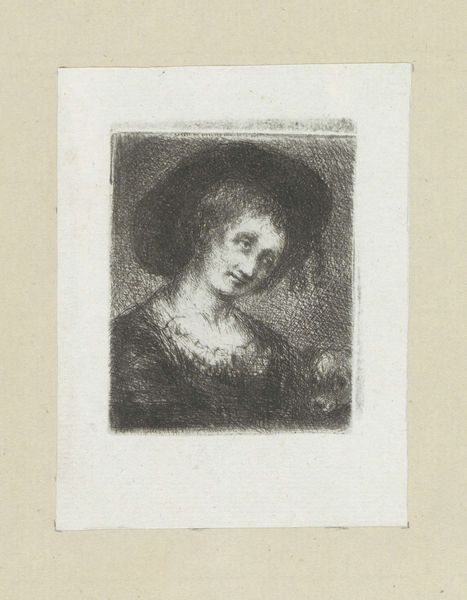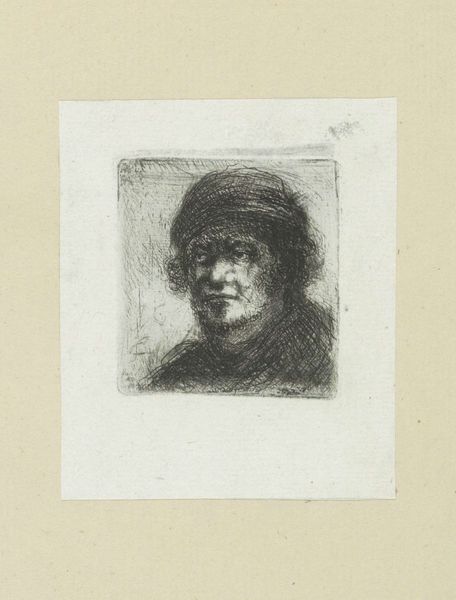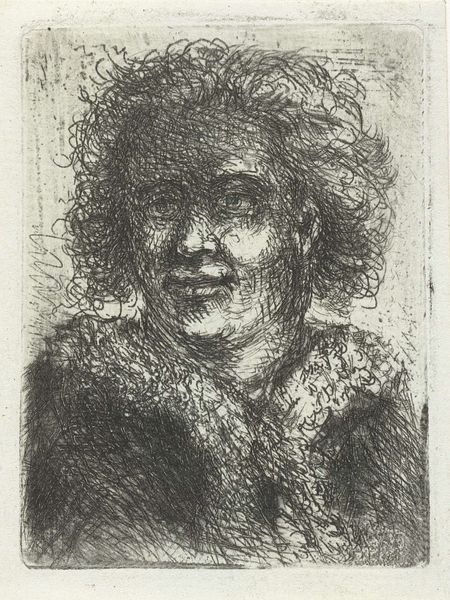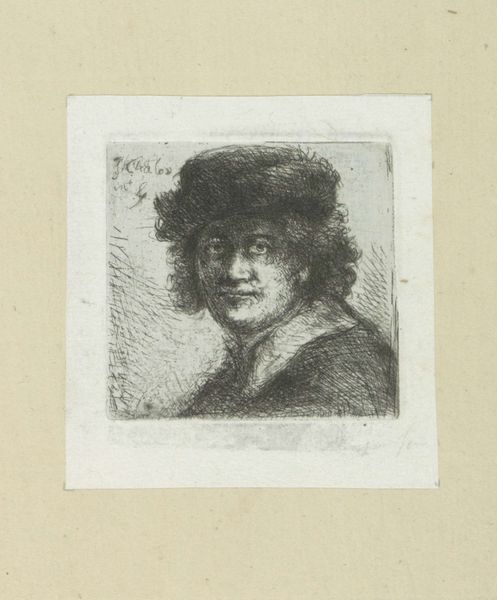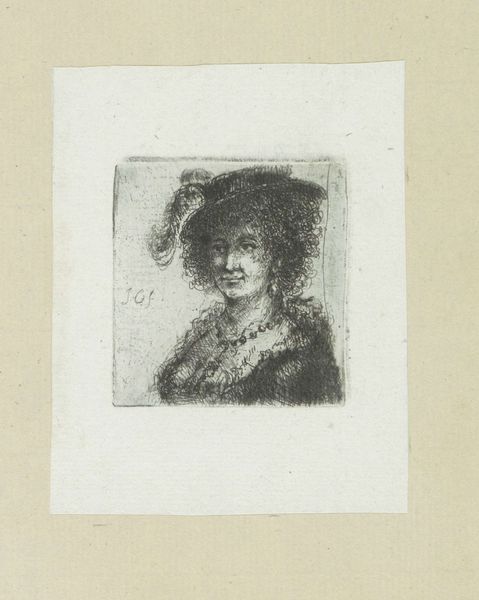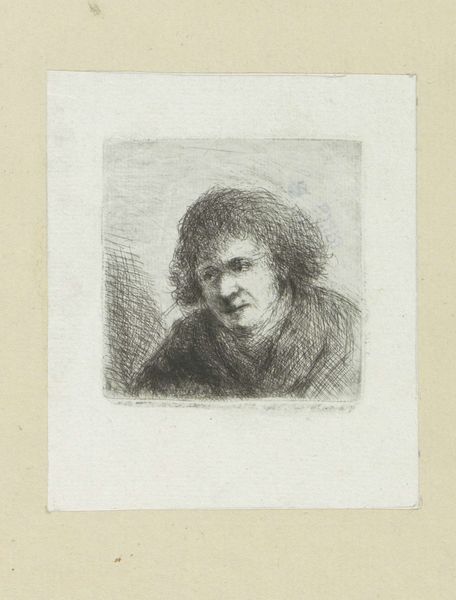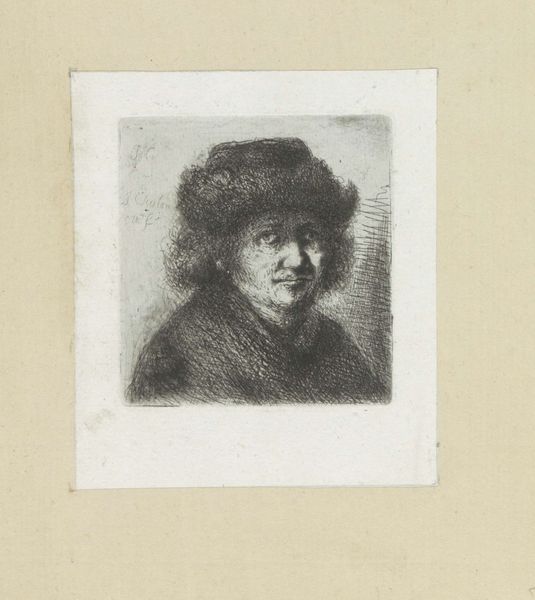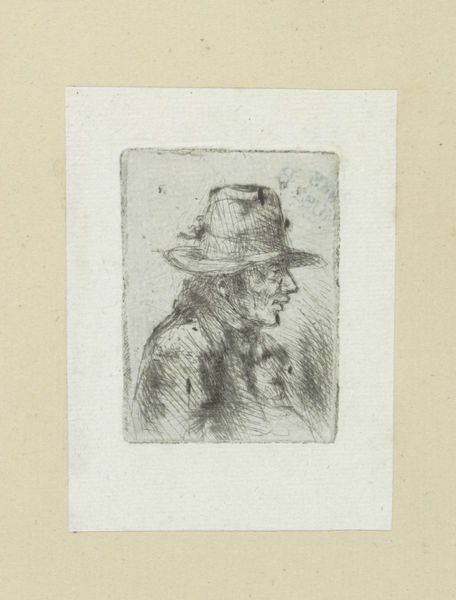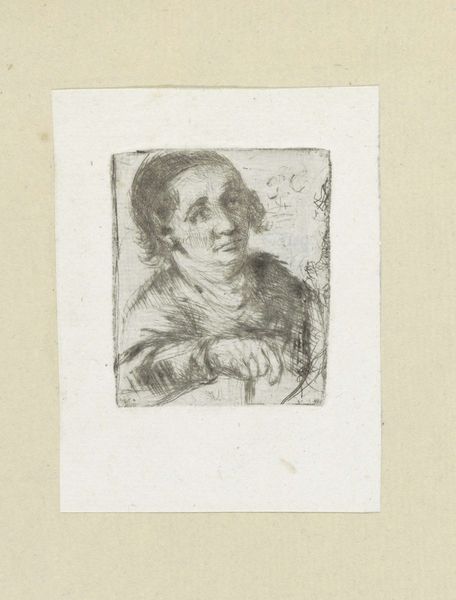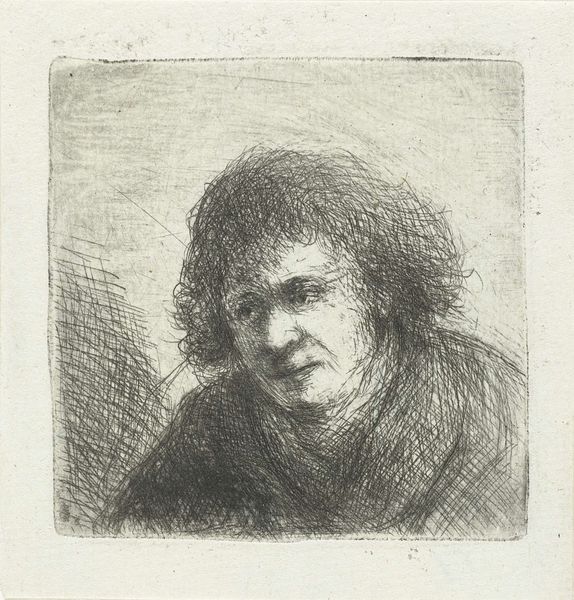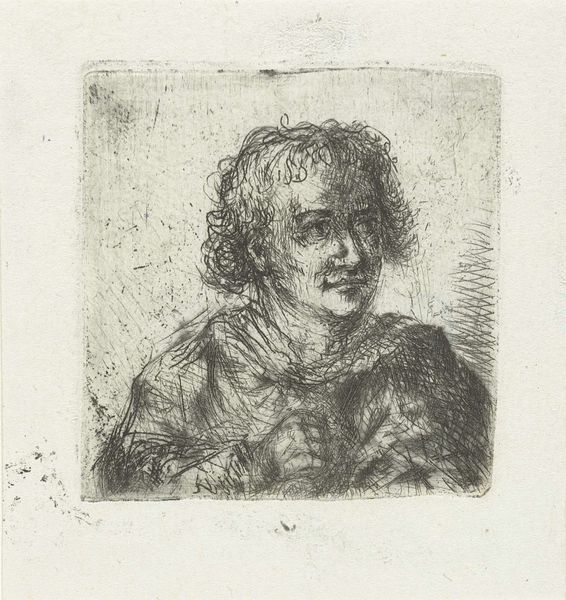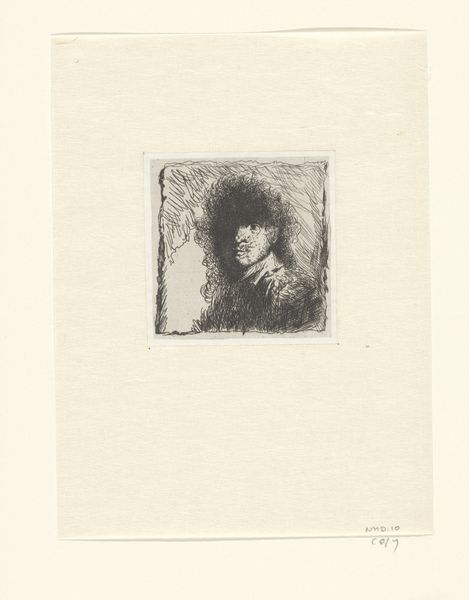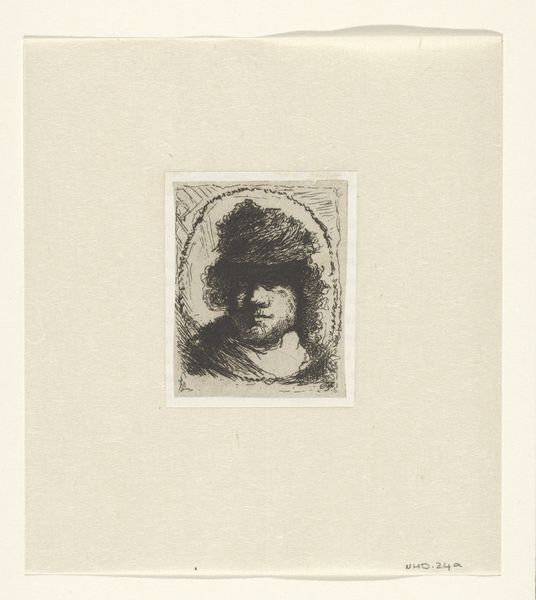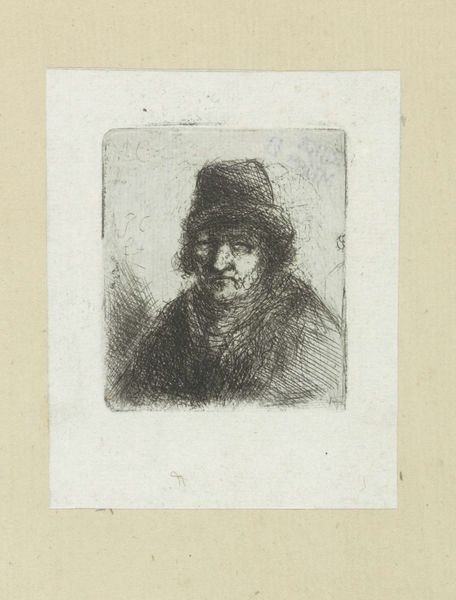
drawing, pencil
#
portrait
#
drawing
#
neoclassicism
#
pencil drawing
#
pencil
Dimensions: height 64 mm, width 47 mm
Copyright: Rijks Museum: Open Domain
This etching, "Man met bontkraag," was made by Jan Chalon in the late 18th century. This print was created using a copper plate, where lines are incised to hold ink, and then transferred to paper under great pressure. The etched lines, with their varying depths and densities, give the portrait an intimate, almost whispered quality. But why did Chalon choose etching, a relatively democratic medium, for this portrait? The answer lies in the context of the printmaking trade. Etchings like these were reproducible, marketable images. This connects the artwork to the rising tide of capitalism in the 1700s. The fur collar, or "bontkraag," signifies luxury. Through the skilled labor of the artist, this portrait speaks to a society increasingly defined by class and consumption. Chalon’s etching reminds us that even the most seemingly straightforward images are shaped by the materials, processes, and social realities of their time.
Comments
No comments
Be the first to comment and join the conversation on the ultimate creative platform.
